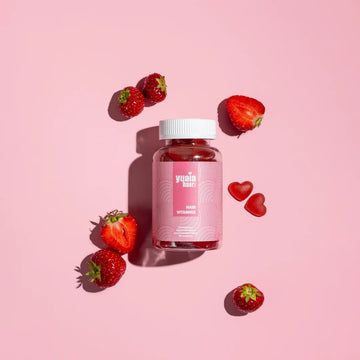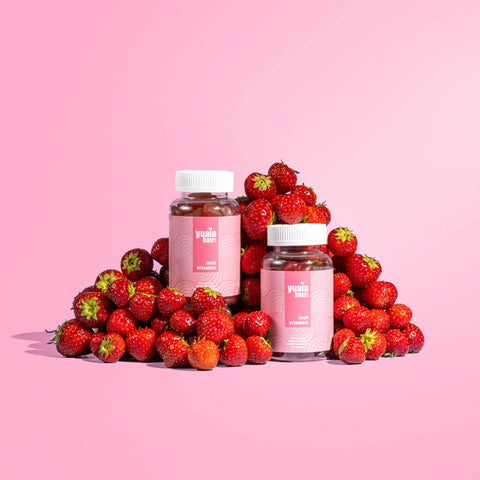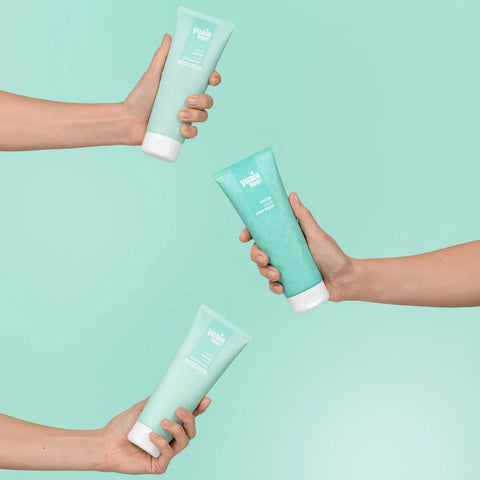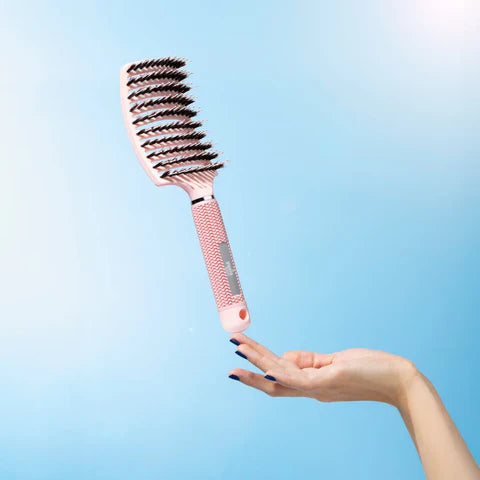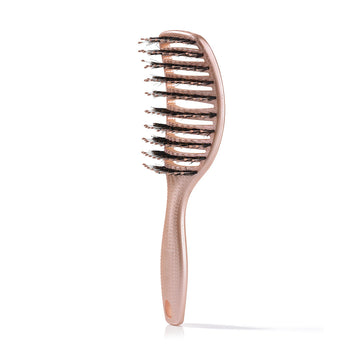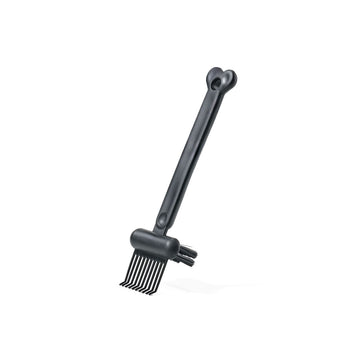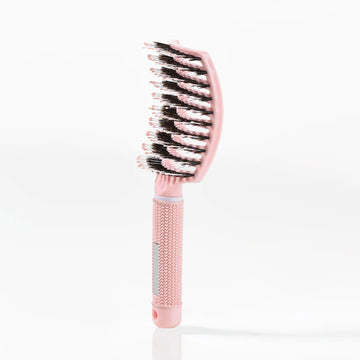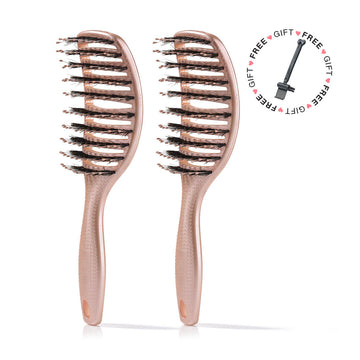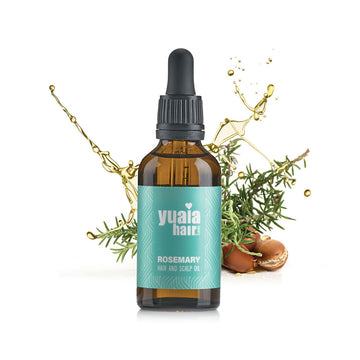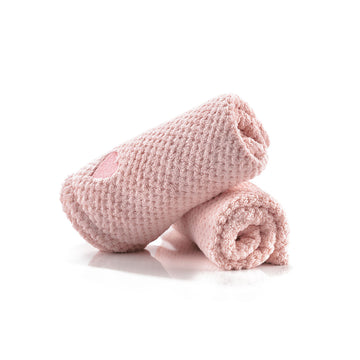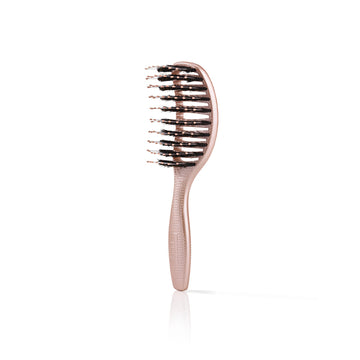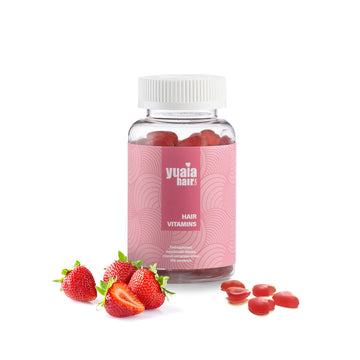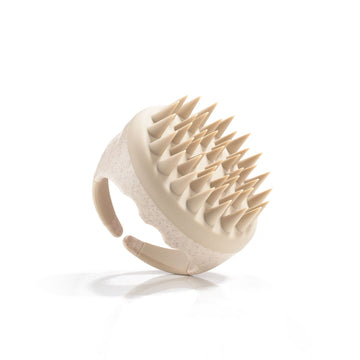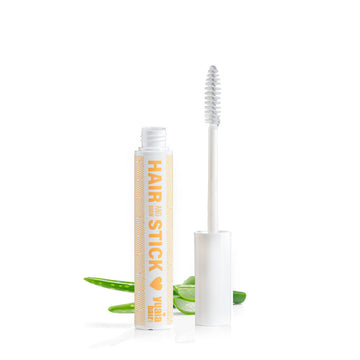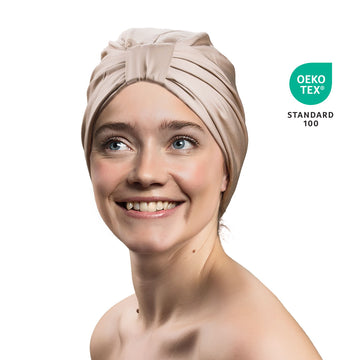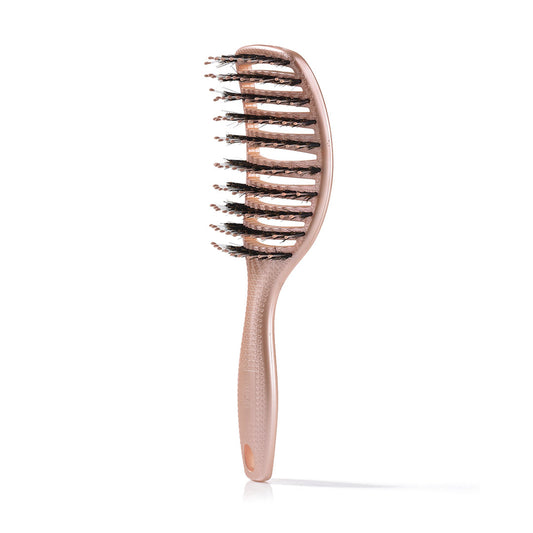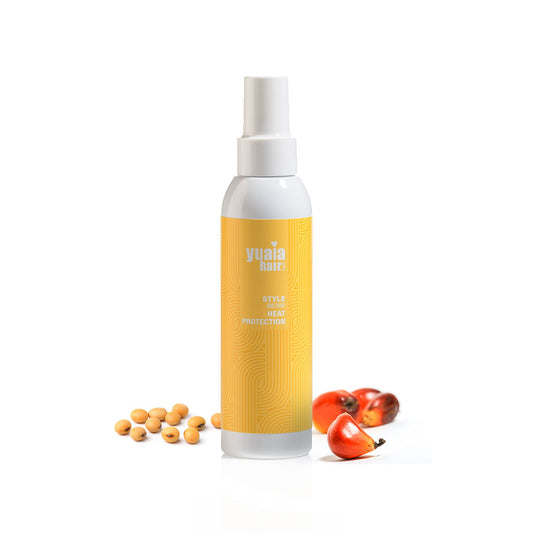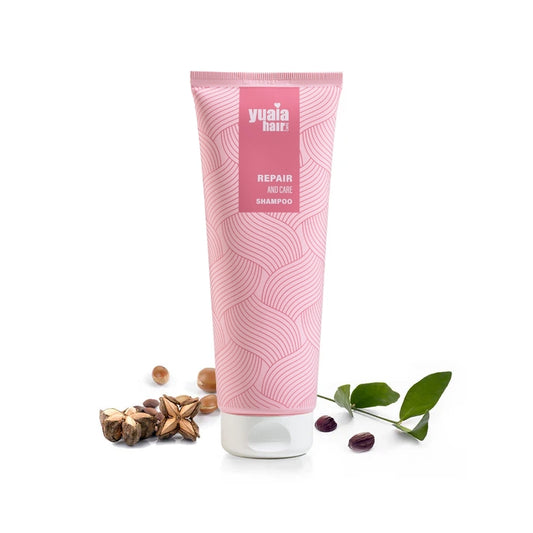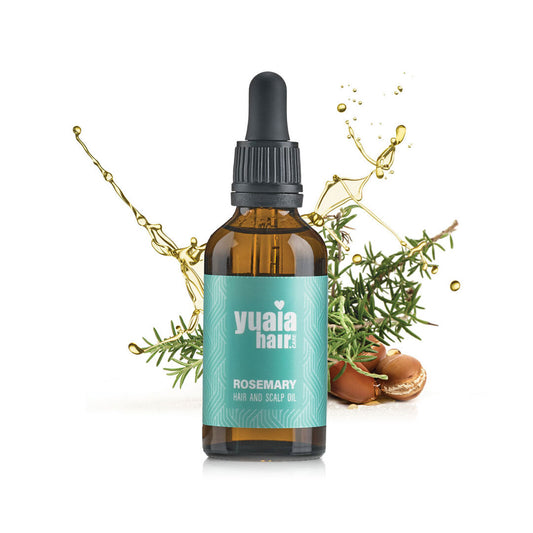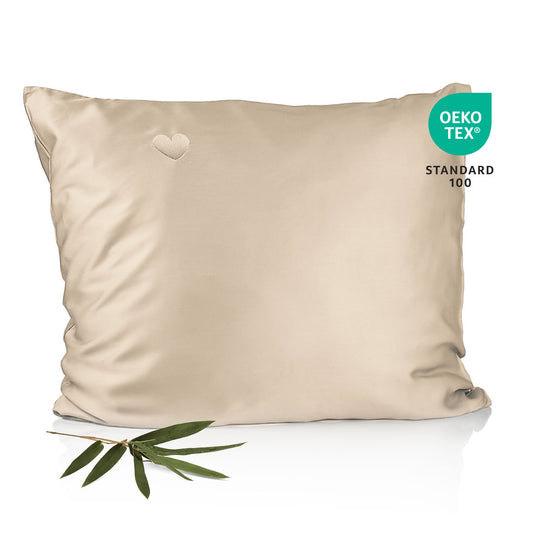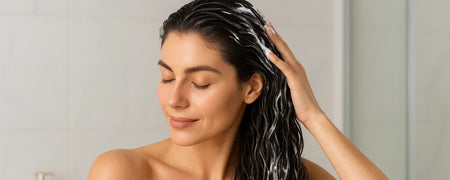
Common causes of coarse hair texture
Coarse hair can result from a range of factors, including genetics, heat damage, chemical treatments, and environmental exposure. Hormonal changes and nutritional deficiencies may also affect hair texture. Understanding these underlying causes is essential to selecting the right care routine and restoring softness and manageability.
Genetics
Firstly, genetics play a significant role. If coarse hair runs in the family, it is likely inherited. The structure and shape of hair follicles are largely determined by DNA, and individuals with coarse hair often inherit a specific hair follicle shape that produces thicker strands. In some ethnic groups, coarser hair is more common due to evolutionary adaptations to environmental conditions.
Environmental influences
Environmental influences also contribute significantly. Prolonged sun exposure can damage the hair's outer layer, known as the cuticle, causing it to become brittle and rough. Wind and pollution further compound this damage by stripping away moisture and introducing toxins that weaken the hair shaft. Frequent washing with hard water, which contains high levels of minerals, can also leave residues that build up on the hair and make it feel heavier and more coarse.
Chemical treatments
Chemical treatments such as dyeing, perming and bleaching have a substantial impact on hair texture. These processes alter the hair’s natural protein structure and can strip the protective oils from the scalp, resulting in hair that feels drier, rougher, and more prone to breakage. Repeated treatments compound this effect and often lead to long-term textural changes.
Heat styling
In addition, heat styling tools such as blow dryers, flat irons, and curling wands can exacerbate coarseness. High temperatures dehydrate the hair and damage the cuticle layer, diminishing the hair's natural shine and smoothness. Without adequate heat protection or proper technique, regular use of these tools can lead to persistent dryness and a coarse, straw-like texture.
Effective hair care routine for soft and silky coarse hair
A dedicated hair care routine is essential for improving coarse hair.
Start with a sulfate-free, moisturizing shampoo that gently cleanses without depleting natural oils. These shampoos clean the scalp while preserving the hair's natural moisture barrier, which is especially important for coarse textures that are naturally more prone to dryness. Additionally, choosing products that are infused with nourishing ingredients like shea butter, argan oil, or aloe vera can provide added hydration and help to soothe the scalp.
Pair this with a rich, hydrating conditioner that penetrates the hair shaft and smooths the cuticle. Look for conditioners containing humectants like glycerin or panthenol, which attract moisture to the hair, and emollients such as jojoba oil or coconut oil, which lock in that moisture. Allow the conditioner to sit for at least 3–5 minutes during each wash to ensure deep penetration and maximum effectiveness.
Deep conditioning treatments should be applied weekly to maintain moisture and elasticity. For best results, use a shower cap or wrap your hair in a warm towel while the treatment is applied, as this helps the ingredients absorb more deeply into the hair shaft. Products with protein components like keratin or silk amino acids can also help to strengthen the hair and improve its texture over time.
Co-washing, or washing with conditioner instead of shampoo, can be beneficial for reducing dryness and maintaining softness. This method is especially effective for individuals with very dry or curly coarse hair, as it helps cleanse the scalp without stripping away natural oils. When co-washing, be sure to massage the conditioner thoroughly into the scalp to lift away dirt and buildup, and rinse well to avoid residue. Alternating co-washing with regular shampoo use can offer a balanced approach to cleansing and conditioning.
Natural remedies and treatments to make hair soft and silky
Achieving soft and silky hair doesn't always require expensive salon treatments. With the right natural remedies and consistent care, you can enhance your hair’s texture and shine from the comfort of your home. This section explores simple, effective treatments using ingredients that nourish, hydrate, and smooth the hair naturally.
Homemade hair masks
Natural ingredients like oats, almond milk, and coconut oil can help improve the texture of coarse hair by adding moisture and nourishment directly to the strands. Coconut oil penetrates deeply to reduce dryness, while oats soothe the scalp and soften the hair—especially useful for dry and unruly types.
For best results, use these masks once or twice a week. Customize them with essential oils such as lavender to calm irritation or tea tree oil for its antimicrobial benefits. Apply from roots to ends, cover with a shower cap, and leave for 20–30 minutes before rinsing with lukewarm water.
With regular use, these treatments can make hair more manageable, reduce frizz, and leave it noticeably softer. You can also experiment with ingredients like aloe vera for sensitive scalps or apple cider vinegar for added shine. These DIY solutions provide a natural, adaptable way to support long-term hair health.
Hot oil treatments
Hot oil treatments with argan, olive, or jojoba oil are excellent for softening coarse hair and enhancing shine. These nutrient-rich oils deeply moisturize, reduce frizz, and improve manageability. Argan oil offers vitamin E benefits, olive oil hydrates effectively, and jojoba oil closely mimics the scalp’s natural sebum.
Applying warm oil allows better absorption, helping to smooth rough textures and support hair cuticle repair. For best results, massage slightly warmed oil into the scalp and hair, then cover with a shower cap or warm towel for 20–30 minutes. Use weekly for dry hair or bi-weekly for maintenance.
Pre-shampoo treatments for extra protection
You can also use pre-wash treatments—applying oils or conditioners before shampooing—to add a layer of protection and boost hydration. Pre-shampoo treatments not only safeguards the hair during cleansing but also helps detangle and reduce breakage. It primes the hair to better absorb the benefits of the following treatments.
Furthermore, integrating steam treatments before or after natural applications can amplify their effects. The heat from steam opens the cuticle, allowing oils and masks to penetrate deeper. Adding this step once a week can significantly increase moisture retention and overall softness.
Over time, hair becomes more resilient, gains a noticeable shine, and achieves a smooth, silky texture that is easier to style and maintain daily.
Daily maintenance tips for coarse hair
Consistent daily care plays an important role in improving and maintaining the texture of coarse hair. Integrating the following practices into your routine can help reduce breakage, enhance manageability, and promote overall hair health:
-
Detangle gently: Use a wide-toothed comb or boar bristle brush, especially when hair is wet. Start from the ends and work your way up to avoid pulling and breakage.
-
Apply moisture before detangling: A leave-in conditioner or detangling spray can ease the process and add hydration.
-
Dry with care: Avoid rough towel drying. Instead, use a microfiber towel or a cotton t-shirt to gently blot excess water and reduce frizz.
-
Minimize heat damage: Air drying is ideal, but if using a blow dryer, attach a diffuser and choose the lowest heat setting.
-
Use protective styles: Opt for loose braids, buns, or twists to retain moisture and reduce daily manipulation. Rotate styles to avoid repeated stress on the same areas.
-
Protect at night: Sleep on a bamboo pillowcase or wear a bamboo bonnet to reduce friction, retain moisture, and maintain your hairstyle.
The key to softer and more manageable hair
Making coarse hair soft and silky is entirely achievable with a combination of good product choices, dedicated routines, and a healthy lifestyle. By understanding your hair's needs and treating it with care and respect, you can enjoy smoother, more manageable locks. Consistency is key, and over time, the results will speak for themselves.
Frequently Asked Questions
What is the difference between coarse hair and thick hair?
Coarse hair refers to the diameter of individual hair strands, meaning each strand is thicker and often feels rougher. Thick hair, on the other hand, describes the density or number of hair strands on the scalp. You can have coarse hair that is not thick, and vice versa.
Can coarse hair become soft and silky with the right care?
Yes, with a consistent hair care routine that includes moisturizing shampoos, rich conditioners, deep conditioning treatments, and protective styling, coarse hair can become softer, smoother, and more manageable over time.
Are natural oils effective for softening coarse hair?
Natural oils like argan, coconut, and jojoba oil are highly effective for softening coarse hair. They penetrate the hair shaft, lock in moisture, and help repair the cuticle, resulting in smoother and shinier hair.
How often should I deep condition coarse hair?
It is recommended to deep condition coarse hair at least once a week. Regular deep conditioning helps maintain moisture, improve elasticity, and reduce frizz, leading to softer and healthier hair.
What should I avoid to prevent coarse hair from becoming dry and brittle?
Avoid excessive heat styling, harsh chemical treatments, and frequent washing with sulfate-based shampoos. Instead, use gentle, moisturizing products and protect your hair from environmental stressors like sun and wind.
 2-5 day delivery
2-5 day delivery
 25.000+ satisfied customers
25.000+ satisfied customers
 Satisfaction Guarantee
Satisfaction Guarantee

